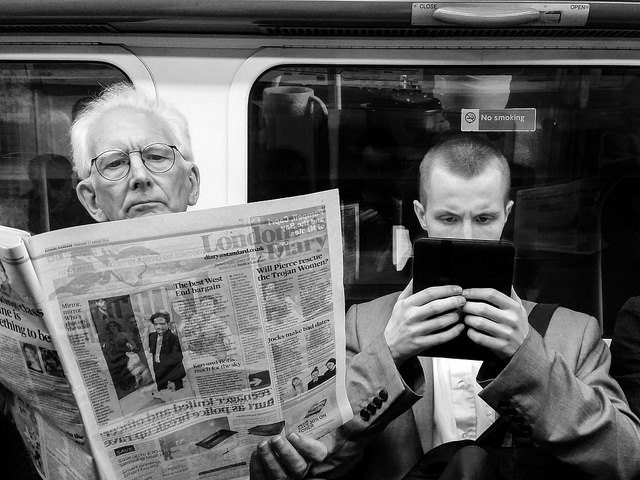Do we need print on paper anymore? After all, we can download books on Kindle, and most of us get our news mainly from the internet. Recently, the executive in charge of the New York Times predicted that printed newspapers will be a thing of the past in 10 years.
“I believe at least 10 years is what we can see in the U.S. for our print products,”said Times CEO Mark Thompson to CNBC. “There may come a point when the economics of [the print paper] no longer make sense for us. . . .Our plan is to go on serving our loyal print subscribers as long as we can. But meanwhile to build up the digital business, so that we have a successful growing company and a successful news operation long after print is gone.”
There is one big problem that needs to be worked out. Readers are indeed abandoning hard-copy, printed newspapers in favor of getting their news on the internet. As a result, newspapers are struggling financially.
But most of the news that people are getting on the internet still comes from newspapers!
Google News, the Drudge Report, and other news aggregators link to newspaper stories. And, strangely, newspapers typically have websites that put up those stories and make them available for free.
Thus the newspaper industry is contributing to its own demise.
But if those newspapers go out of business, who will cover the news that people get free on the internet? More to the point, who will pay the men and women who write the stories?
The major newspapers–the New York Times, the Washington Post, the Wall Street Journal, and a few others–charge for online subscriptions. This is proving very lucrative, which is why Mr. Thompson does not sound too worried about his prediction. According to the CNBC story, the Times now has more than a million digital subscribers.
If newspapers like these can simply migrate their business model to screens instead of newsprint–complete with paid subscriptions–they should have no problem. They can continue to pay their reporters, columnists, critics, and other writers just like before.
But most online users resist paying for what they get. A foundational motto of the internet culture is “information wants to be free.”
If information, whatever it wants, isn’t free because the companies that produce it have gone out of business, probably more people would pay for subscription sites.
To be sure, there are a number of free online newspaper and magazines that pay their writers, and these show great promise. These support themselves by advertising.
That is pretty much how internet sites make money, so perhaps there is room for more and more. Advertising-based news might be a viable business model. Print newspapers also depended on advertising revenue, but that too has drifted to the internet as local companies shift to online advertising.
I suspect that the big newspapers will survive in the digital form Mr. Thompson is looking forward to, but this will change their character. Instead of being the source for local news, they will become nation-wide platforms.
And though they are likely to survive, the little newspapers in smaller cities and towns probably won’t.
The promise of the internet was the decentralization of information, where everyone with a computer could potentially have, in effect, a printing press. Ironically, when it comes to news, we might see a centralizing effect after all.
Book publishing seems to have mostly solved the financial problems of moving from paper to the screen. A reader can download a book online at not much less than the price of a hard copy. The publisher is making money, while eliminating the expense of paper, printing factories, and a distribution system.
No doubt the news business will also find a solution, though it will likely involve having to pay subscriptions for the sites we want to use or possibly microcharges of a few pennies for each site we access.
The new business models may change the internet as we know it.
Or might print survive after all? Usually, new media don’t replace the old media, but simply add to it. Thus we still have live drama, even though we have movies, and we still have movies even though we have television, and we still have television even though we have Netflix.
Photo, “Little and Large: Tabloid and Tablet” by Matthew G via Flickr, Creative Commons License











